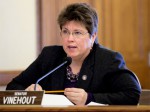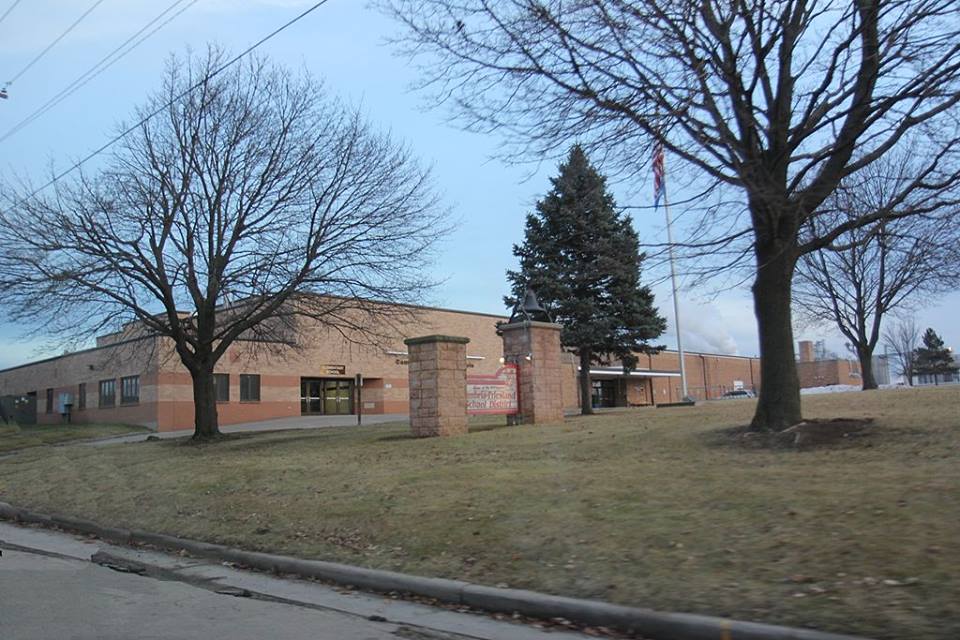State School Funding Has Steadily Declined
Blue Ribbon Commission on School Funding finds schools struggling with unmet needs.
How can a rural school meet critical needs when money for schools is less than adequate?
“A school board member went door-to-door asking for support,” Birchwood Superintendent Diane Johnson said to members of the Blue Ribbon Commission on School Funding. “He raised $3,000 to get the front doors locked.” The money raised was for purchase of a long-needed intercom system at the front door. “The doors were not locked during the day until this month,” Dr. Johnson told Commission members in May.
Dr. Johnson went on to say next would come an effort to buy key fobs for the staff and re-key the doors. The school didn’t lock the doors or change the locks for over 50 years. With a population of less than 500 in Birchwood, “everyone has a key to the school.”
School funding is not adequate for students in many communities across our state. Mounting mental health and school safety issues are just some of the problems facing superintendents, school boards and bookkeepers like Birchwood’s Bonita Basty.
The state pays only about a quarter of the costs for special education despite the legal requirement that school districts must provide these services. Both federal and state special education reimbursement dropped over the years, while the needs of students grew.
Across the state, the Commission heard testimony regarding impossible trade-offs school districts are forced to make between basic building maintenance, school safety, achievement, accountability and student needs.
A new study released by the Wisconsin Budget Project, an initiative of the nonpartisan advocacy group Kids Forward, provided insight into why Wisconsin schools face such difficult challenges and what options exist to make changes in budget priorities.
“In 2019, the state will invest less in public schools than it did in 2011, something that has been true of every year in between as well. In 2019, Wisconsin school districts will receive $153 million less in state aid than in 2011 in inflation-adjusted dollars, or 2.6% less,” noted the Budget Project.
The series of cuts made to schools over the years add up. The Budget Project reported that between 2012 and 2019, Wisconsin spent a cumulative $3.5 billion dollars less in state aid to schools than if the state had retained the 2011 funding level.
Looking at where dollars moved in Wisconsin’s budget, the Budget Project reported the share of tax dollars used for schools dropped since 2011. In that year, Wisconsin spent almost forty percent of tax revenue on school districts. By 2019, this percent is estimated to drop to 32 percent.
The report provided some answers to the question, if WI didn’t spend money on schools, where did the money go? Since 2011, majority lawmakers enacted more than 100 tax changes.
… some of which are extremely slanted in favor of the wealthy and well connected. One example is the Manufacturing and Agriculture Credit which in 2017 gave 11 filers who each earned over $30 million an average estimated tax cut of $2 million each, according to figures from the Legislative Fiscal Bureau. The Manufacturing and Agriculture Credit will reduce state revenue by an estimated $324 million in 2019.
“The combined cost of the new tax cuts has climbed each year, starting from a low of $57 million in 2012, and reaching $2 billion in 2019 in inflation-adjusted dollars. The combined total cost of the tax cuts adds up to $8.7 billion over eight years.
Wisconsin needs to increase funding for schools. One place to go to find dollars without increasing total spending, is the expensive corporate cash subsidies and tax breaks given out in the past eight years.
However, the state also needs to change how money is distributed to districts. We need a new funding formula based on student needs. Much public testimony given to the Commission detailed greater student needs because of having parents suffering from addiction, and students with challenges related to mental illness and trauma. Additionally, there are increasing needs and less state support for students in poverty, with special needs, and English learners.
The Wisconsin Budget Project study makes it clear – money is available if lawmakers are willing to change priorities.
State Sen. Kathleen Vinehout, D-Alma, is a member of the Wisconsin state Senate and a Democratic Gubernatorial Candidate.
Op-Ed
-
Unlocking Milwaukee’s Potential Through Smart Zoning Reform
 Jul 5th, 2024 by Ariam Kesete
Jul 5th, 2024 by Ariam Kesete
-
We Energies’ Natural Gas Plans Are A Mistake
 Jun 28th, 2024 by John Imes
Jun 28th, 2024 by John Imes
-
Milwaukee Needs New Kind of School Board
 Jun 26th, 2024 by Jordan Morales
Jun 26th, 2024 by Jordan Morales






















No mention in this article about the declining birth rate. Less students equals less funding. Consolidate rural schools in the area.